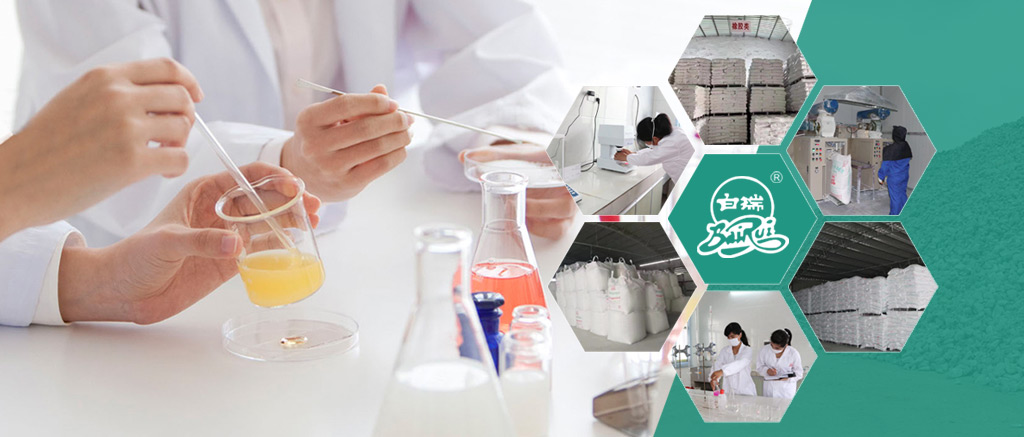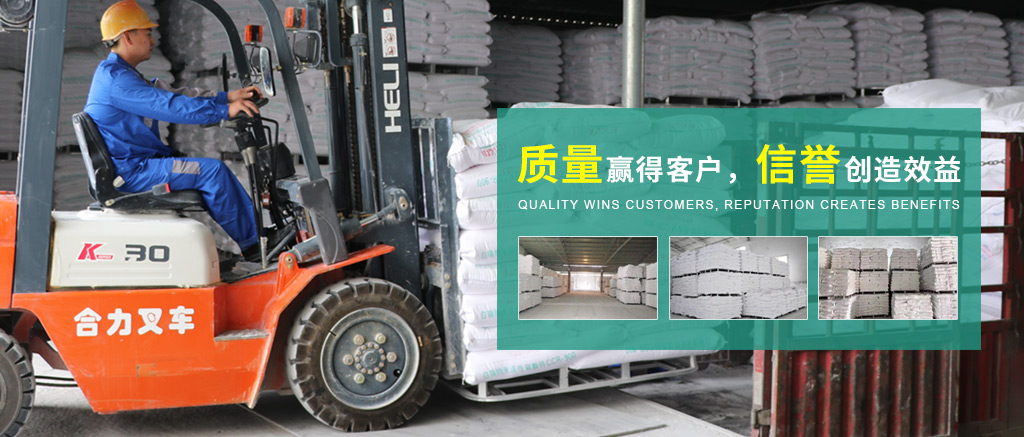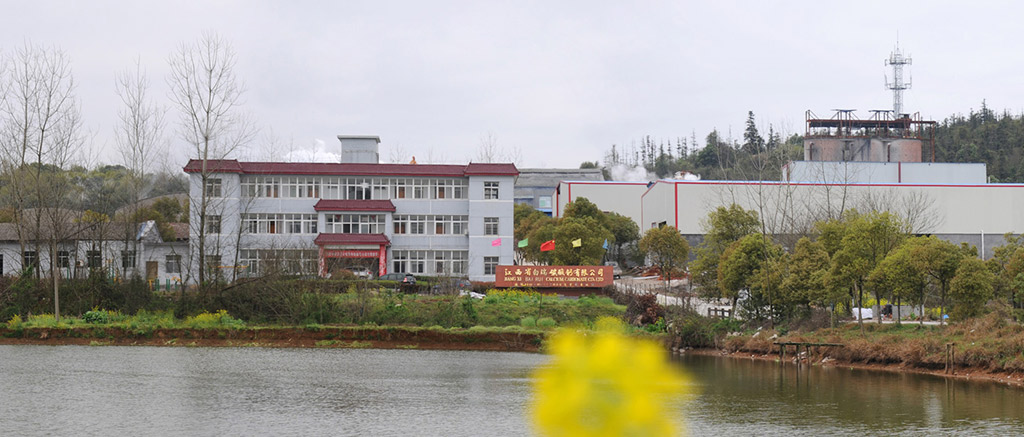Nano-calcium carbonate science -2
Time: 2017-07-27
The production methods of nano-calcium carbonate mainly include physical method and chemical method. Physical method refers to the preparation method from raw materials to particles without chemical reaction, that is, the natural limestone with high calcium carbonate content is mechanically crushed and calcium carbonate products are obtained. However, it is very difficult to use a general crusher to crush below 1.0 micron, and only by using special methods and machinery can it be achieved below 0.1 micron, so chemical methods are often used in actual production. Chemical methods include compound decomposition method and carbonization method.
2.1 Compound decomposition method
Compound decomposition method is the use of water-soluble calcium salt (such as calcium chloride, etc.) and water-soluble carbonate (such as ammonium carbonate or sodium carbonate, etc.), under the appropriate process conditions to react, through the liquid-solid reaction process to produce nanoscale calcium carbonate products. By controlling the concentration, temperature and supersaturation of the reactants, and adding appropriate additives, amorphous calcium carbonate with sphericity, small particle size, large specific surface area and good solubility can be obtained. The obtained products have high purity and good whiteness, but because a large number of chloride ions adsorbed in calcium carbonate are difficult to remove, the cleaning method used in production often requires a lot of time and washing water, so it is rarely used in China.
2.2 Carbonization method
The carbonization process is to calcined selected limestone to obtain calcium oxide and kiln gas. The suspended calcium hydroxide produced by the digestion of calcium oxide was crushed under high shear force, and the particles and impurities were removed by multi-polar spinning liquid separation to obtain a refined calcium hydroxide suspension with a certain concentration. Then carbon dioxide gas is introduced, appropriate amount of crystal shape control agent is added, carbonized to the end point, and the required crystal shape of calcium carbonate slurry is obtained. Finally, nano-calcium carbonate products are obtained by surface treatment and drying and crushing. In the carbonization method, the carbonization process determines the particle size and crystal shape of light calcium carbonate. This method has the advantages of good product quality and low cost, and is the main method for producing nanometer calcium carbonate at home and abroad. It mainly includes several production methods such as intermittent carbonization method, continuous spray carbonization method and super gravity carbonization method.
2.2.1 Intermittent carbonization method
The batch carbonization method to produce nano calcium carbonate is based on carbon dioxide and calcium hydroxide as raw materials, in the stirred bubble carbonization tower or tank, carbon dioxide and the calcium hydroxide cooled by the refrigerator to produce calcium carbonate emulsion reaction, because the reaction control is intermittent, it is called intermittent (frozen) carbonization method. According to the different contact methods of carbon dioxide and calcium hydroxide, it can be divided into two kinds: intermittent bubbling carbonization method and intermittent stirring carbonization method. Intermittent bubbling carbonization method is to cool 5~8 degrees of lime milk carbonization freezer to below 25℃, pump into the carbonization tower, maintain a certain level, through the bottom of the tower into the kiln gas bubble carbonization reaction, by controlling the reaction temperature, concentration, gas-liquid ratio, additives and other technological conditions, intermittent preparation of nano-calcium carbonate. This method has the advantages of small equipment investment, simple operation, high energy consumption, difficult to control process conditions and wide particle size distribution. Intermittent stirring carbonization method, also known as kettle carbonization method, is to cool the lime milk through the freezer to below 25 ° C, into the carbonization reaction kettle, through the carbon dioxide mixture gas, carbonization reaction under agitation. Nano-calcium carbonate was prepared intermittently by controlling reaction temperature, concentration, stirring speed and additives. This method has large equipment investment and complex operation, but because of the large contact area of stirring gas and liquid, the reaction is more uniform, and the product particle size distribution is narrow.
2.2.2 Continuous spray carbonization method
Continuous spray carbonization method is a process developed by Japan Shiraishi Industrial Company in the late 1970s, which usually uses multiple carbonization towers, and the kiln gas containing carbon dioxide enters from the bottom of the tower and countercurrent contact with the lime milk sprayed into a certain drop diameter at the top of the tower for carbonization reaction. This type of carbonization process can be two-stage, can also be three-stage multi-stage, generally 2 to 4 segments is good. The selection of the number of segments should be determined according to the user's performance requirements for the product. By using spray carbonization process, calcium carbonate with average particle size less than 100nm can be obtained by adjusting the concentration of calcium hydroxide suspension, the diameter of spray droplet, the concentration of carbon dioxide mixture, the empty column speed, the gas-liquid ratio and the carbonization rate of each column of slurry. Similarly, by adjusting the reaction parameters of the reactor, a single superfine product such as cube-shaped, chain-shaped and sphere-like can be obtained. For example, by using the three-stage carbonization method, controlling the concentration of calcium hydroxide suspension in the carbonization process to be 0.1%~10% (mass), the temperature to be 1~30℃, a certain droplet diameter and a certain empty tower speed, a cuboidal calcium carbonate less than 100nm can be obtained. This method has high efficiency, good economic benefit, and can realize automatic large-scale production. The disadvantage is that the equipment investment is large.
2.2.3 Super gravity carbonization method
The high gravity carbonization method is a new method of synthesizing nano calcium carbon developed by the High gravity Engineering Technology Research Center of Beijing University of Technology in recent years. It is based on carbon dioxide and calcium hydroxide as raw materials, according to the theory of molecular reaction, using the gravity environment generated by rotation is much larger than the earth's gravity acceleration, effectively control the carbonization reaction and crystallization process on the molecular scale, and prepare small particle size and uniform distribution of nano powder calcium carbonate. The high-speed rotating packing will cut the calcium hydroxide solution into fine droplets, liquid filaments and liquid films, the powerful centrifugal force field makes the calcium carbonate particles once formed quickly out of the calcium hydroxide solution, can not continue to grow, at the same time, the contact area of calcium hydroxide solution and carbon dioxide gas is greatly increased and rapidly updated, so that the reaction speed is greatly improved. The superheavy carbonization method has the following advantages: (1) It can strengthen the transfer and reaction of carbon dioxide and calcium hydroxide, and control the carbonization reaction and crystallization process of carbon dioxide and calcium hydroxide; (2) uniform particle size, small average particle size, narrow particle size distribution range, the average particle size of the obtained product is 15~30nm; (3) No need to add crystal inhibitors, so that the production cost is greatly reduced; (4) The carbonization time is greatly shortened than the ordinary carbonization method, only 10% to 20% of the traditional process; (5) The reaction device is small, easy to operate and less investment; (6) High purity and stable quality.
2.2.4 multi-stage spray carbonization method
In traditional gas-liquid equipment, to increase the mass transfer rate, only increase the contact area between the gas-liquid phase when other conditions remain unchanged. In the spray carbonization tower, it is precisely by the effect of centrifugal force that the mass transfer area between the gas and liquid phase can be increased, and because the gas-liquid phase is countercurrent contact, coupled with the cross-flow cutting generated by the atomizer itself by high-speed rotation, the liquid is atomized into very small and uniform fog particles, so the microscopic mixing degree between the gas is very high, and the mass transfer specific surface area between the gas and liquid phase is greatly increased. The mass transfer coefficient is more than 100 times higher than that of the ordinary gas-liquid phase, which ensures that the average volume equivalent diameter of nanometer calcium carbonate prepared in the spray carbonization tower is about 35nm. The basic steps of preparing nanometer calcium carbonate by multi-stage spray carbonization method are as follows: the refined lime milk suspension is prepared into the required concentration, the appropriate amount of additives is added, and the mixture is pumped into the atomizer at the top of the spray carbonization tower. Under the action of huge centrifugal force generated by high-speed rotation, the emulsion is atomized into micro-particle droplets; After mixing and drying, the mixed gas containing an appropriate amount of carbon dioxide enters from the bottom of the tower and is evenly distributed in the tower through the gas distributor. The droplet makes instantaneous reverse contact with the gas in the tower and chemically reacts to produce calcium carbonate. The particle size of calcium carbonate prepared by the multi-stage spray carbonization method is fine and uniform, the average particle size is in the range of 30~40nm, and the particle crystal type can be adjusted and controlled.







 Home
Home  News
News


